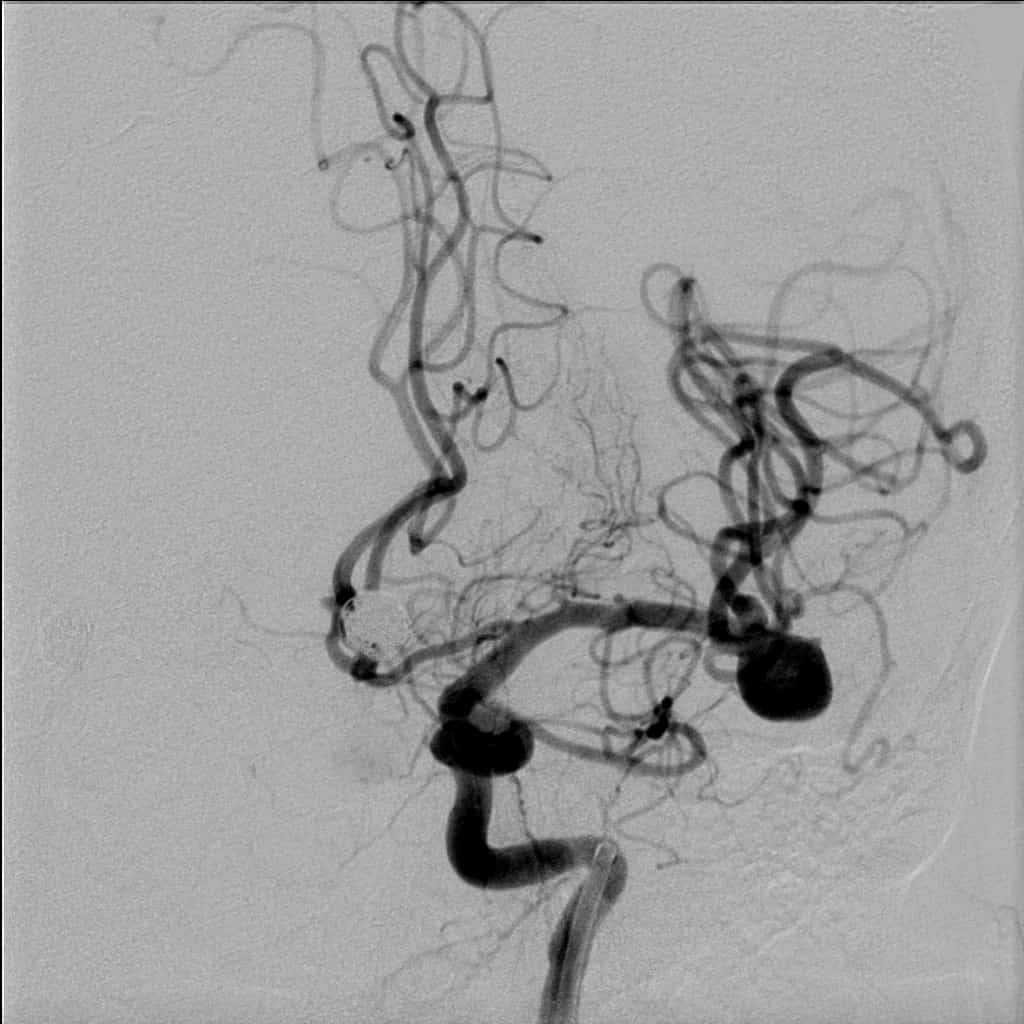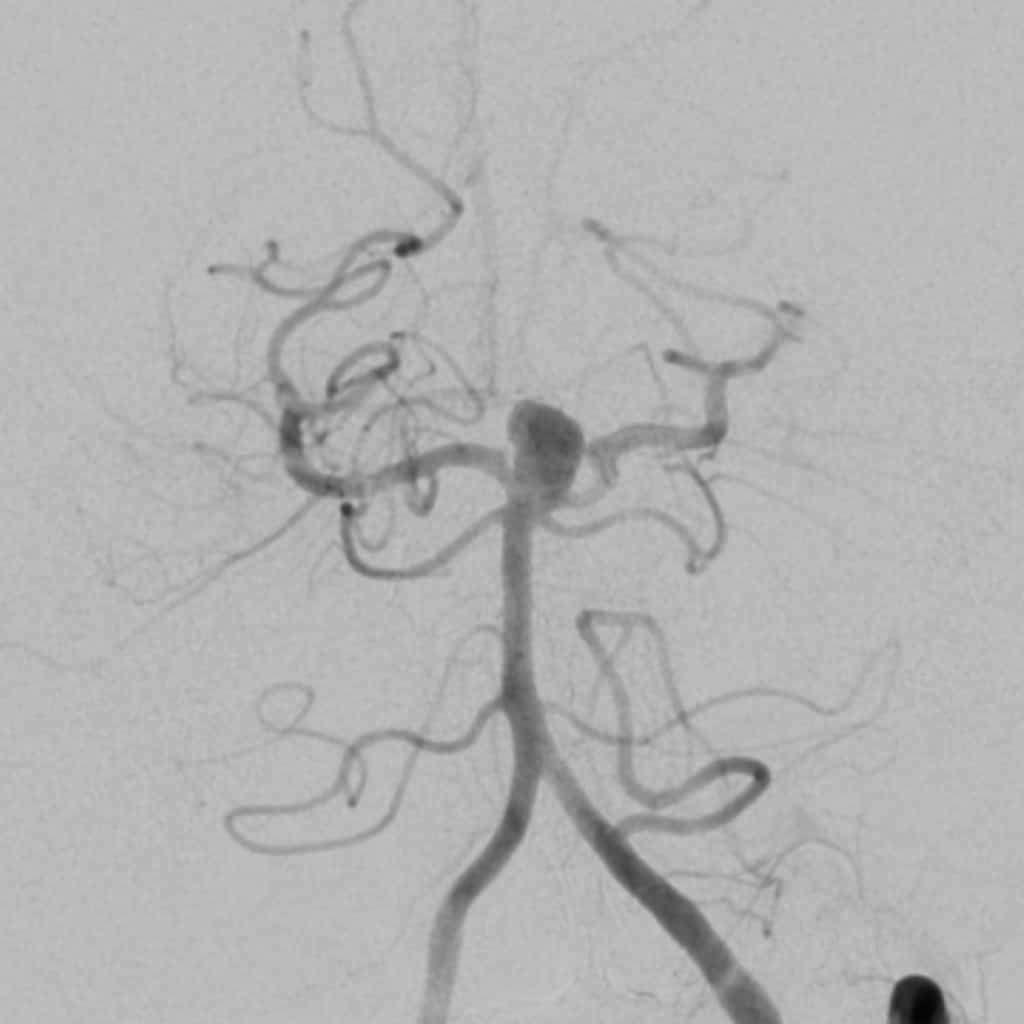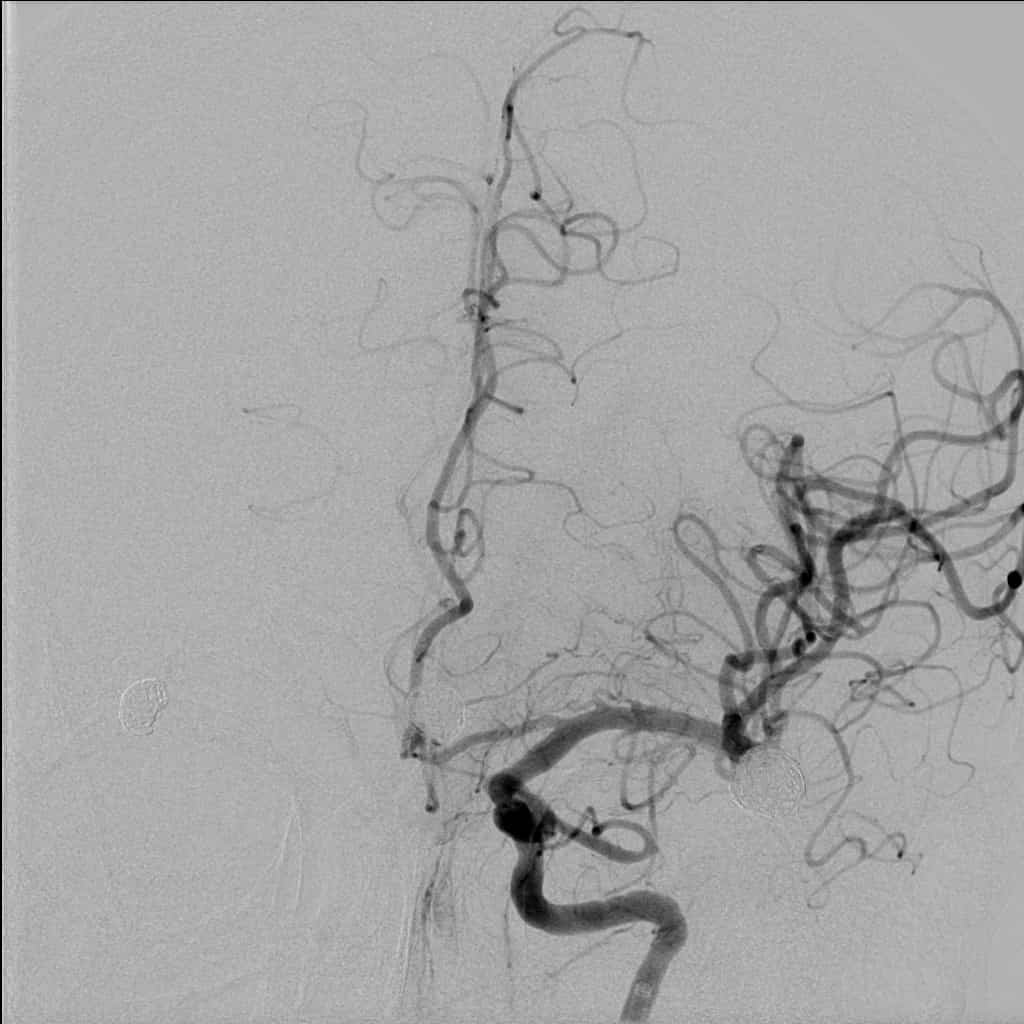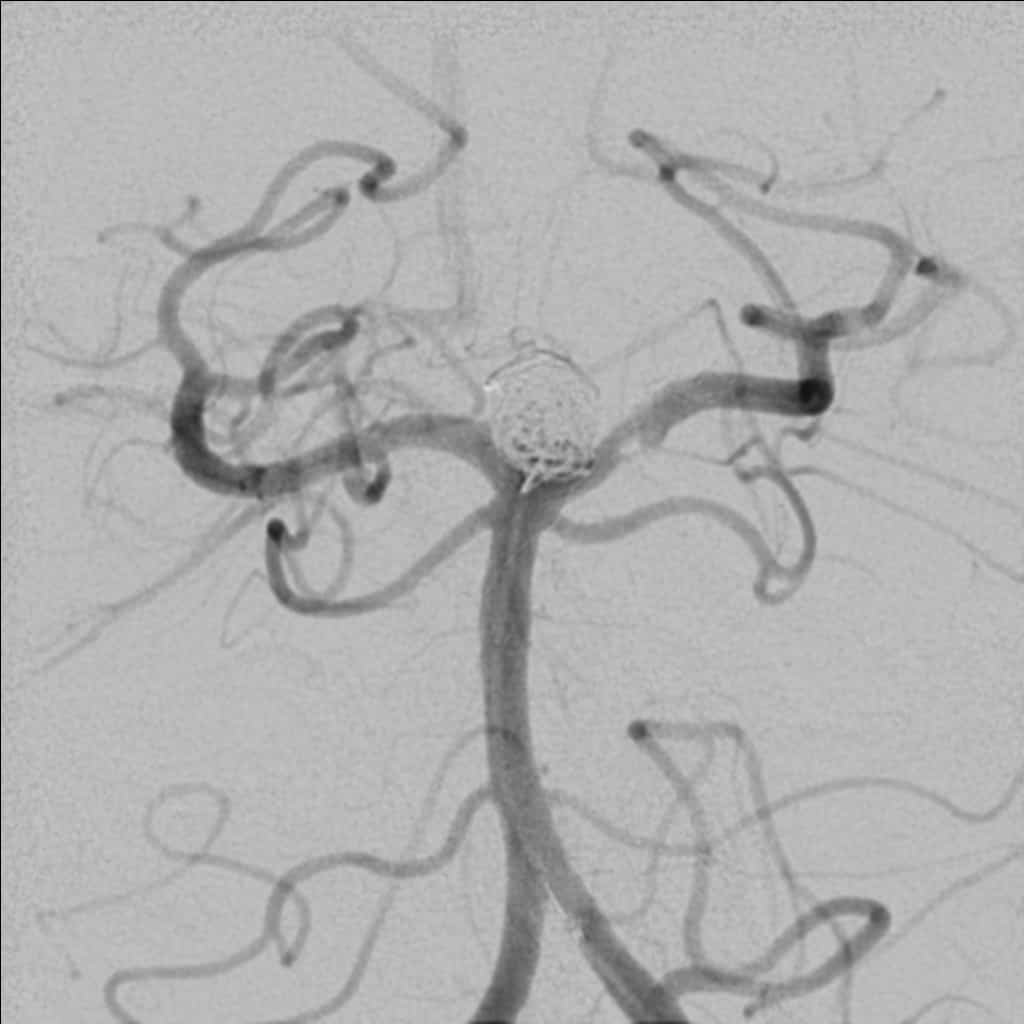What is a Brain Aneurysm?
A brain aneurysm, also called a cerebral or intracranial aneurysm, is a weakness in the wall of an artery in the brain which leads to a bulging or ballooning out of part of the vessel. Aneurysms form silently from wear and tear on the arteries, and sometimes can form from injury, infection, or may be inherited. Aneurysms occur in all age groups, but the incidence increases steadily for individuals age 25 and older. The average age of rupture is in the mid 50s, and is more common in women. The main reason we worry about brain aneurysms is that rupture is life-threatening.
It is estimated that up to one in 15 people in the United States will develop a brain aneurysm during their lifetime.
Unruptured Aneurysms
Unruptured brain aneurysms are often asymptomatic, particularly when they are small. Large unruptured aneurysms may cause symptoms based on the pressure they put on surrounding structures, including brain tissue or nerves. Symptoms may include pain above and behind the eye, numbness, weakness or paralysis on one side of the face, dilated pupil or vision changes.1
Unruptured aneurysms are no less frightening or life altering than ruptured aneurysms, but may require a different treatment assessment. Some of the things that a doctor will consider in deciding whether or not to treat an unruptured aneurysm include:
Middle cerebral artery (MCA) aneurysm (BEFORE)

Basilar trunk aneurysm (Before)

Middle cerebral artery (MCA) aneurysm (AFTER)

Basilar trunk aneurysm (After)

